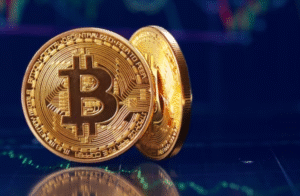$GLD $GC $BTC
#gold #commodities #preciousmetals #investing #markets #economy #inflation #interestRates #finance #stocks #trading #crypto
Spot gold is poised to reach new highs by the end of the year, according to market expert Axel Rudolph from IG Markets. Rudolph projects that the price of gold will climb to $2,900 per ounce, driven by a variety of macroeconomic factors reshaping the global financial landscape. This surge is considered significant for both traders and long-term investors as it may reflect broader shifts in market sentiment, particularly about inflationary pressures and decisions by central banks regarding monetary policies. Gold has historically been viewed as a safe-haven asset, especially during times of economic instability or when the value of fiat currencies experiences downward pressure. If Rudolph’s prediction proves accurate, gold would solidify its value proposition amid an environment of heightened market uncertainty.
One key driver of rising gold prices is likely persistent inflation, which has been a global concern since the pandemic and exacerbated by supply chain disruptions and geopolitical tensions, especially in Europe and Asia. Central banks, particularly the Federal Reserve, have been adjusting interest rates to combat these inflationary pressures. Gold typically performs well in higher inflationary environments as investors seek assets that can mitigate the deterioration in the purchasing power of money. Moreover, rising interest rates usually trigger volatility in the equity markets, which could further push investors toward gold as a form of risk protection. As a result, gold becomes appealing not only as a hedge against inflation but as a stabilizer for portfolios heavily exposed to traditional financial assets like stocks.
By the first quarter of 2025, Rudolph forecasts that spot gold may trade between $3,000 and $3,113 per ounce. Such levels would surpass previous historical highs, solidifying a bullish outlook over the long term. A rally to these levels could indicate a slowdown in the monetary tightening cycle; if central banks begin cutting rates in response to economic slowdown risks or possible recessions, it would likely push more liquidity into safe-haven assets like gold. This scenario suggests that savvy investors are watching not just the inflationary environment but also the broader economic context, which includes factors like consumer sentiment, manufacturing output, and even employment figures. These broader components of economic health all play a role in whether assets like gold will continue their upward trajectory in 2025 and beyond.
Another vital aspect of this potential gold surge is its relationship with other asset classes, particularly cryptocurrencies like Bitcoin, which often mirror some of the same investor concerns about fiat currency valuation. In recent times, many retail and institutional investors have diversified into both gold and crypto assets, aiming to shield portfolios from macroeconomic fluctuations, especially inflation and geopolitical tensions. While gold has a more time-tested history, crypto like Bitcoin has often been dubbed “digital gold.” However, if gold achieves the price points predicted by Rudolph, it may outperform many alternative asset classes, drawing capital inflows from crypto markets ($BTC) and tech-heavy stock indices. What remains clear is that strategic diversification across various asset classes will continue to be a core principle for those managing portfolio risks in this uncertain global climate.







Comments are closed.